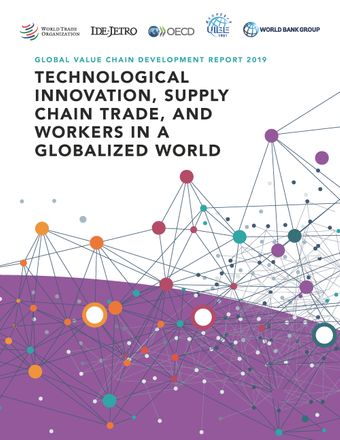Should high domestic value added in exports be an objective of policy?

- By: World Trade Organization
- Source: Global Value Chain Development Report 2019 , pp 141-153
- Publication Date: April 2017
- DOI: https://doi.org/10.30875/0a2c5fe2-en
- Language: English
Global value chains make it easier for developing countries to move away from export reliance on unprocessed primary products to become exporters of manufactures and services. Global value chains (GVCs) allow countries to specialize in a particular activity and join a global production network. As a developing country moves from export of primary products to export of manufactures and services via GVCs, the ratio of domestic value added to gross export value tends to fall. Many developing country policy-makers worry about this trend and aspire to increase their value added contribution to exports. There are a number of reasons why this objective is not good policy. It may seem like simple math that a higher domestic value added share means more total value added exported and hence more GDP. But that simple idea ignores the reality that imported goods and services are a key support to a country’s competitiveness. The chapter documents this via the history of the successful East Asian industrializers as well as more recent evidence from Association of Southeast Asian Nations (ASEAN) economies. If a country artificially replaces key inputs with inferior domestic versions, the end result is likely to be fewer gross exports and less, not more, total value added exports.
-
From This Site
/content/books/9789287049681c011dcterms_subject,pub_countryId-contentType:WorkingPaperSeries -contentType:Periodical -contentType:BookSeries -contentType:ReportSeries105


